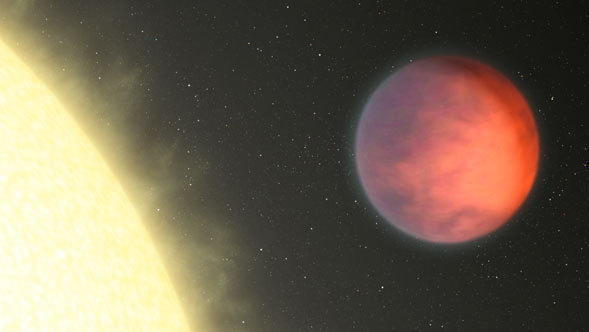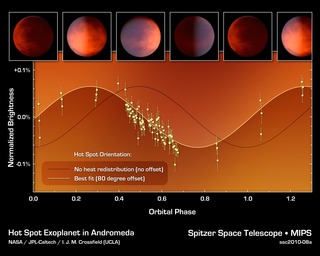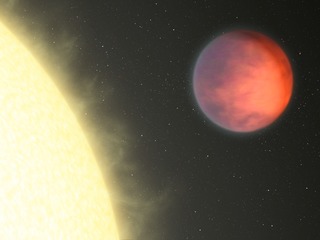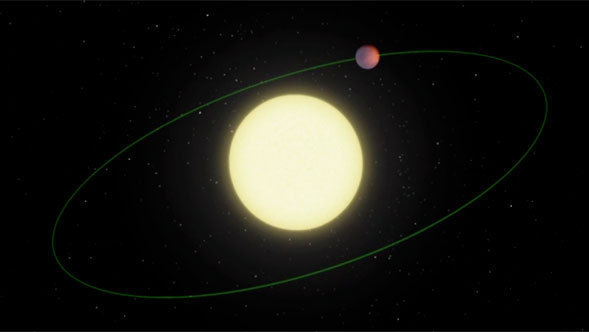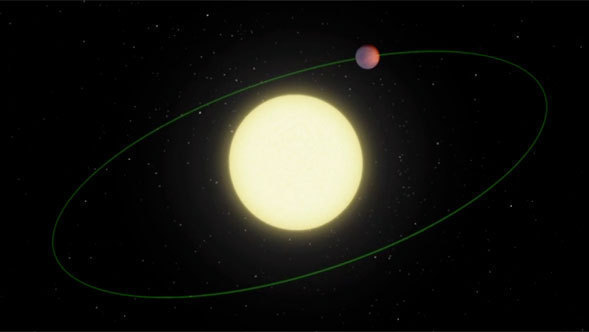Weird Warm Spot on Exoplanet
Science Animations Video • October 19th, 2010 • ssc2010-08v1
This animation illustrates an unexpected warm spot on the surface of a gaseous exoplanet. NASA's Spitzer Space Telescope discovered that the hottest part of the planet, shown here as bright, orange patches on the surface, is not directly under the glare of its star but over to the side.
The planet -- a hot, gaseous orb named upsilon Andromedae b -- whips around its star every 4.6 days. Its relative size has been scaled up a bit here for clarity. Because the planet is so close, it is tidally locked, meaning that one side is eternally bombarded by the star's radiation. As can be seen in the animation, the side of the planet facing the star is lit up, while the other side lives in the darkness. The perspective drawn here starts from overhead, and then changes to Earth's point of view; in other words, in the second part of the animation, Earth and the Spitzer telescope are located in the direction of the viewer.
Spitzer observed the heat from the star system with its infrared detectors. It measured the infrared light coming from the star and planet, as the planet circled around. The oscillations in this light -- called a light curve -- occur as the planet swings around: when the hottest part of the planet faces us, the total light goes up; when the coolest part faces us, the total light goes down.
Spitzer found that, in contrast to what might be expected, this planet's hot spot is not facing the sun. Instead, it is over 80 degrees to the side, at about the day-night terminator line, or the point where the light and dark sides of the planet meet.
This animation ends by showing the corresponding Spitzer data. The light curve reveals the location of the planet's hot spot.
Video Credit: NASA/JPL-Caltech
